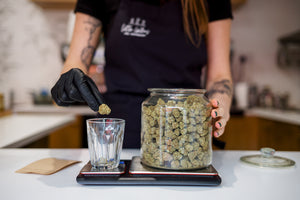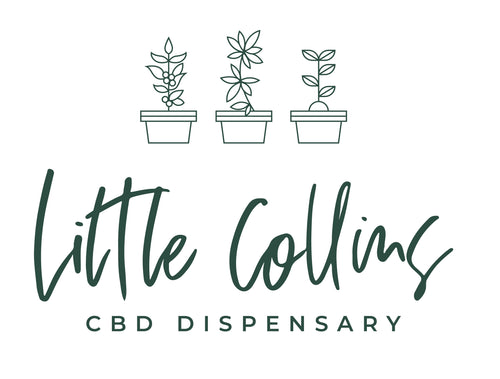‘The Wonderful World of Cannabinoids’
What exactly are cannabinoids? Many of you will have heard of CBD and THC, but there is a wide array of lesser known cannabinoids out there hiding away until we can isolate them from the rest. THC, or Delta 9-Tetrahydrocannabinol as it is affectionately known by the scientific community, is one I'm sure many people are familiar with. It was a driving force of the free love movement in the 60’s and has been a highly controversial talking point for many years. CBD on the other hand is the more medicinal side of the cannabis plant. While THC can help with nausea and insomnia, CBD can be used for a much wider array of problems such as anxiety and pain relief, and is also non-psychotropic meaning it does not make the user ‘high’. This makes it extremely effective as a medicine as most users would not want the psychoactive effects of THC. However, one minor cannabinoid is gaining traction lately due to its anti-inflammatory properties and its ability to kill MRSA, a sometimes-deadly bacteria that has plagued hospitals for years. So, what are the differences between these different cannabinoids?
THC and CBD:
Both of these cannabinoids interact with the endocannabinoid system in our brain. Endo, when added before cannabinoid, means a cannabinoid naturally produced in a mammal's body. Phyto before cannabinoids mean it comes from a plant, although the ‘Phyto’ is almost never used. The Endocannabinoid system naturally releases cannabinoids into our blood that bind with cannabinoid receptors in the brain and body. Evidence suggests that these cannabinoid receptors are involved in a wide array of bodily functions such as motor functions, control of appetite, pain modulation and even neuroprotection. Phytocannabinoids, such as THC and CBD, interact in the same way with our Endocannabinoid system. Cannabis is the only known plant that produces cannabinoids and so it acts as an aid or supplement to our own systems natural production.
Anandamide, named after the Sanskrit word for ‘bliss’ or ‘joy’, was the first endocannabinoid to be isolated. It helps regulate many functions of the body such as pain management and appetite, hence naming it after bliss! But THC and CBD are only the most common in a whole family of Phytocannabinoids. CBG is making headway lately as strains have been bred that allow for high levels of CBG in the flower. This is a difficult process as CBGA turns into THCA or CBDA when exposed to ultraviolet light or heat while growing, so one must continuously breed plants to stop converting the CBG, or extract CBG from the plant between 6-8 weeks while the levels are at their highest, such as how Bedrocan medical extract pure CBG to use in their labs.
CBG:
Initial testing for CBG has been promising, however it has only been tested on mice and in lab petri dishes so much more testing needs to be done. However, in the majority the tests, CBG has shown strong anti-inflammatory properties. On top of this, in 2015, a study showed that it protected neurons in mice with Huntington's disease, a neurological disease that effects motor movements, emotional stability and causes a loss of thinking ability (cognition). While these studies have only been conducted in mice, it is a very promising start to tests that will hopefully soon be conducted in humans. Dr. Kaufman, chief scientist for American Shaman a CBD company in the United States says that ‘so far the results of animal studies are extremely encouraging’. CBG has also shown to be extremely proficient at killing Methicillin-resistant Staphylococcus aureus (MRSA), which is bacteria commonly found on the skin or in the nose of healthy people. The problem however is when it gets into an open wound it can be fatal and has plagued hospitals since its discovery in 1961 in Britain. CBG not only kills these bacteria, which is resistant to all known anti-biotics, but it also kills its resistor cells that allow it to regenerate after being denatured. Much more testing is needed for CBG, however initial results are extremely promising, and it is a cannabinoid that you will hear much more about in the near future as uses for it develop and are tested in humans.


